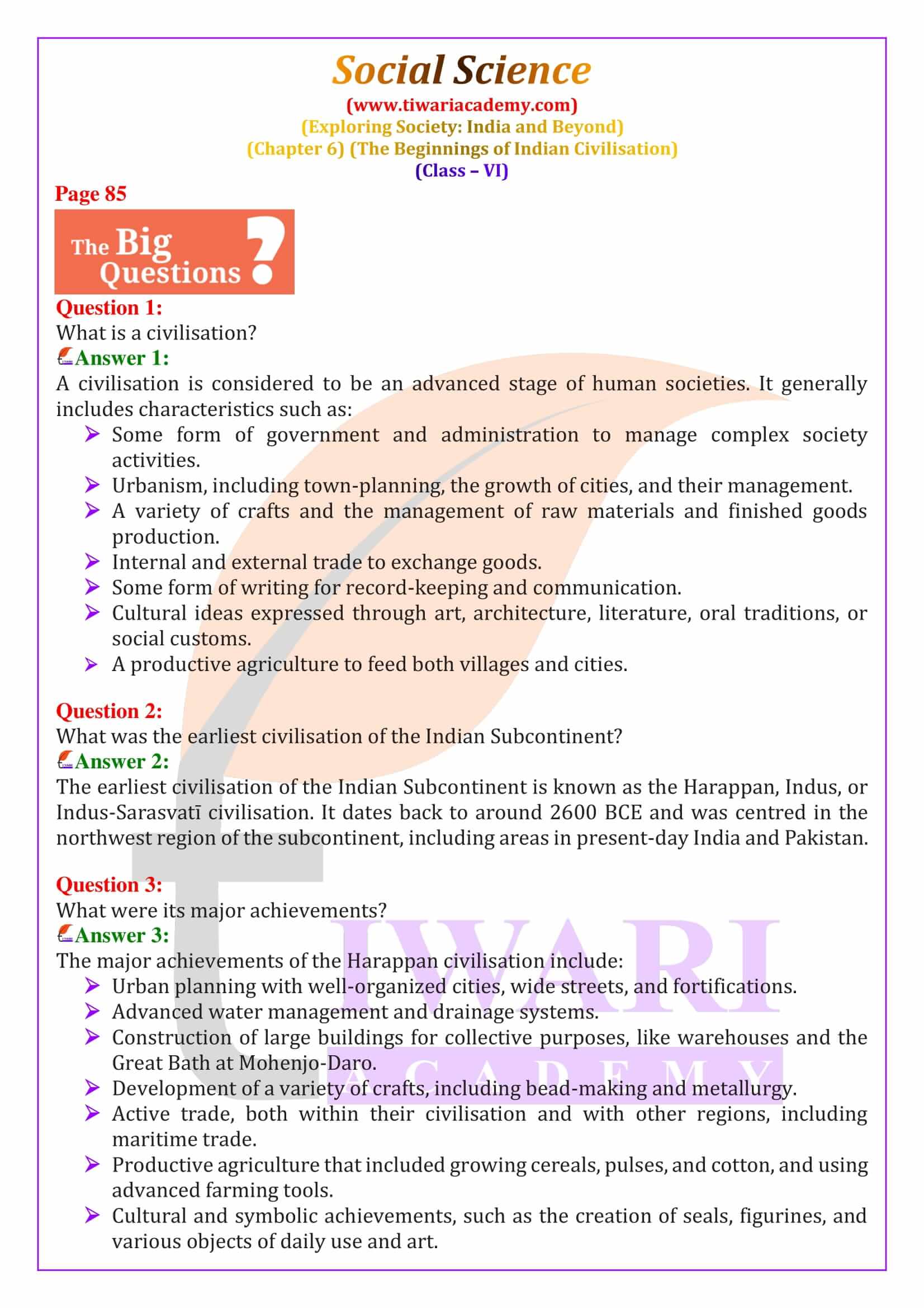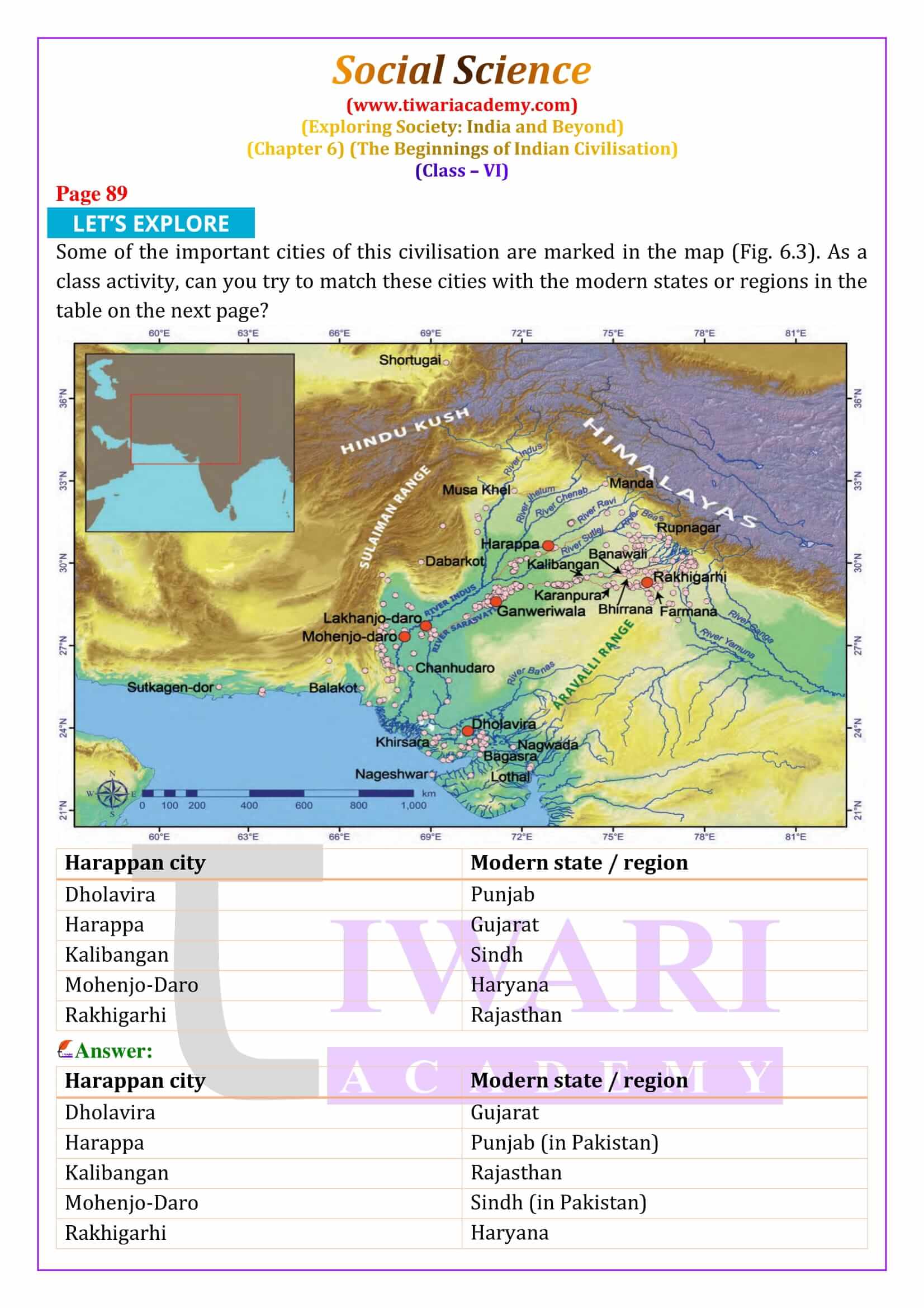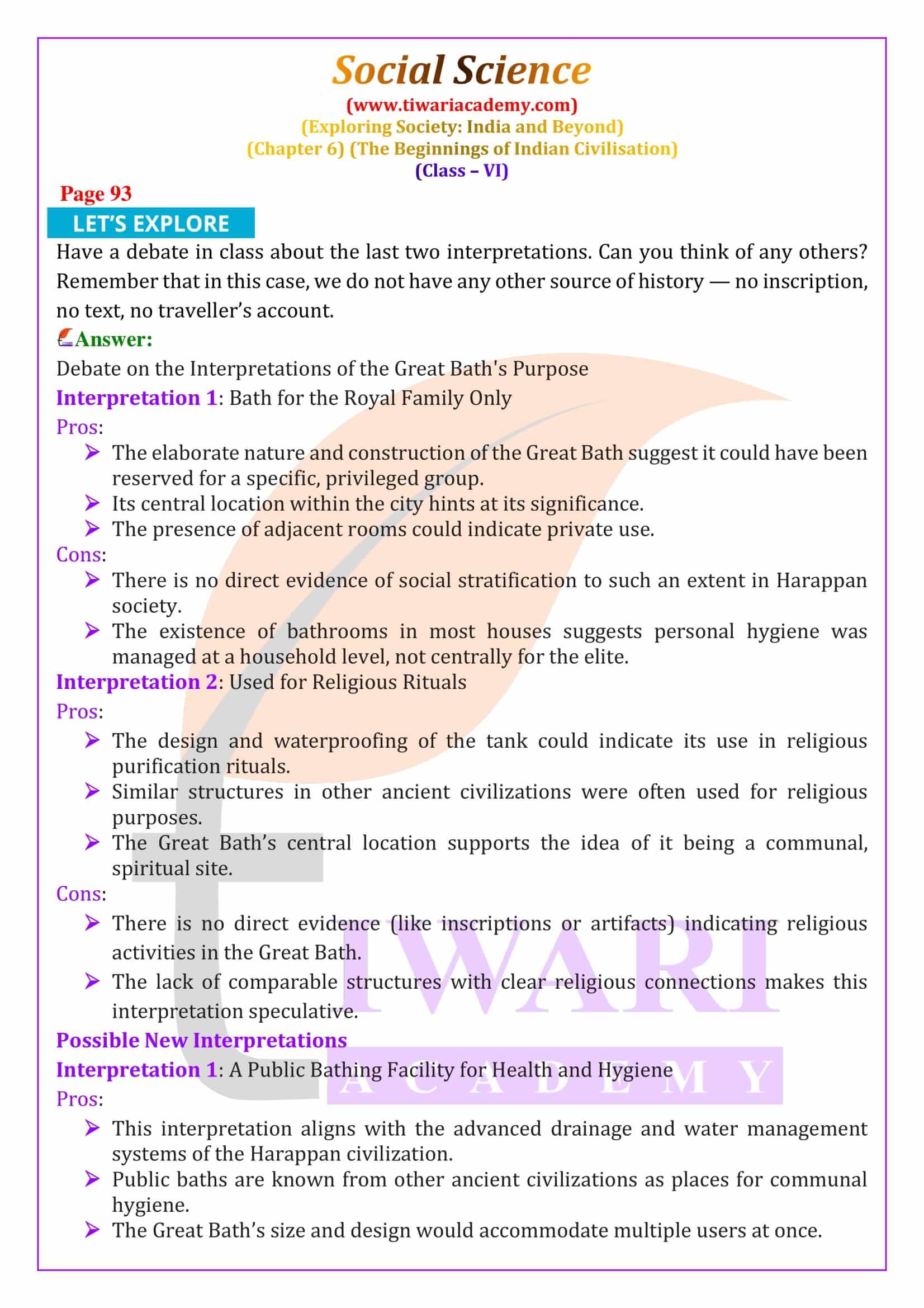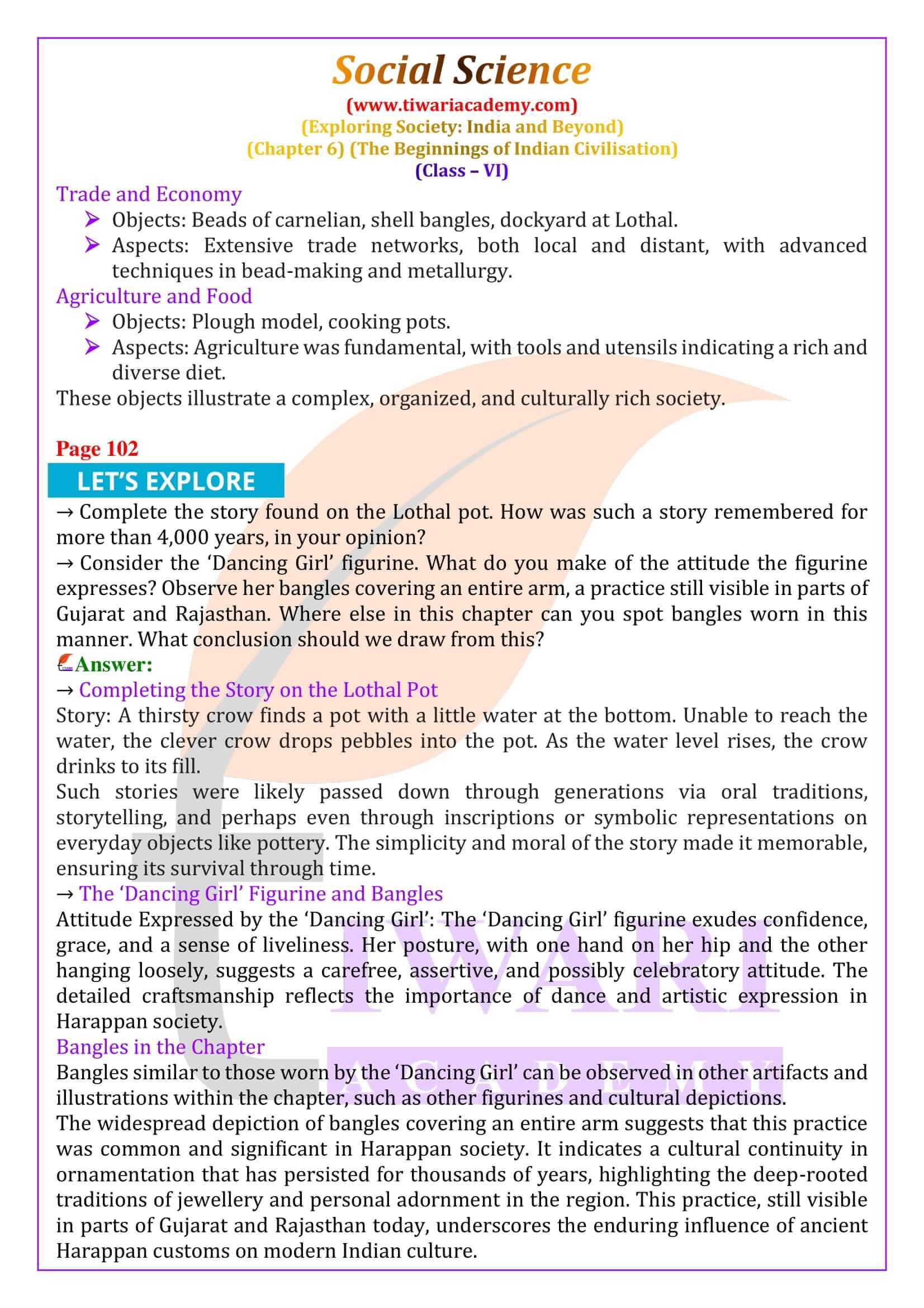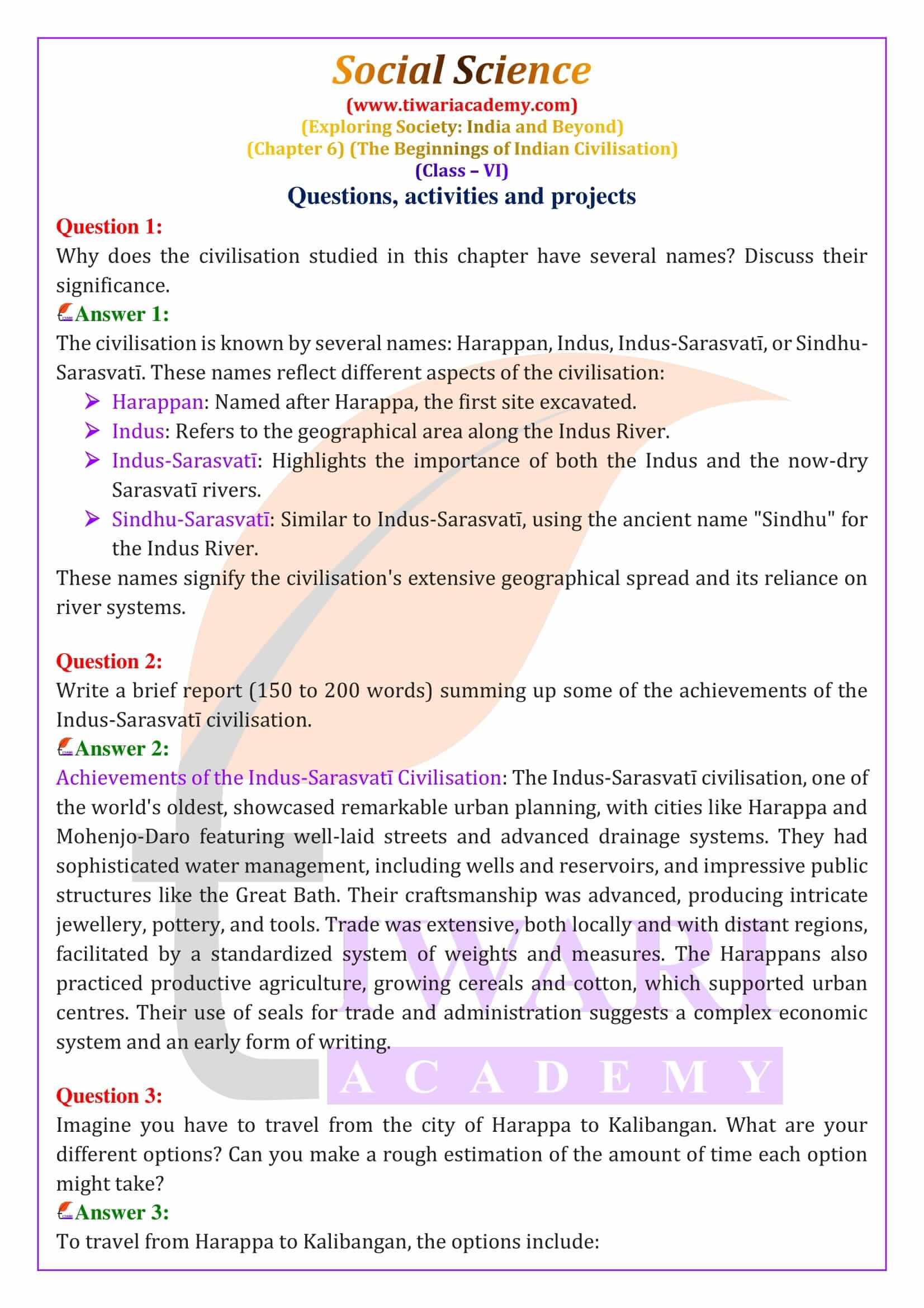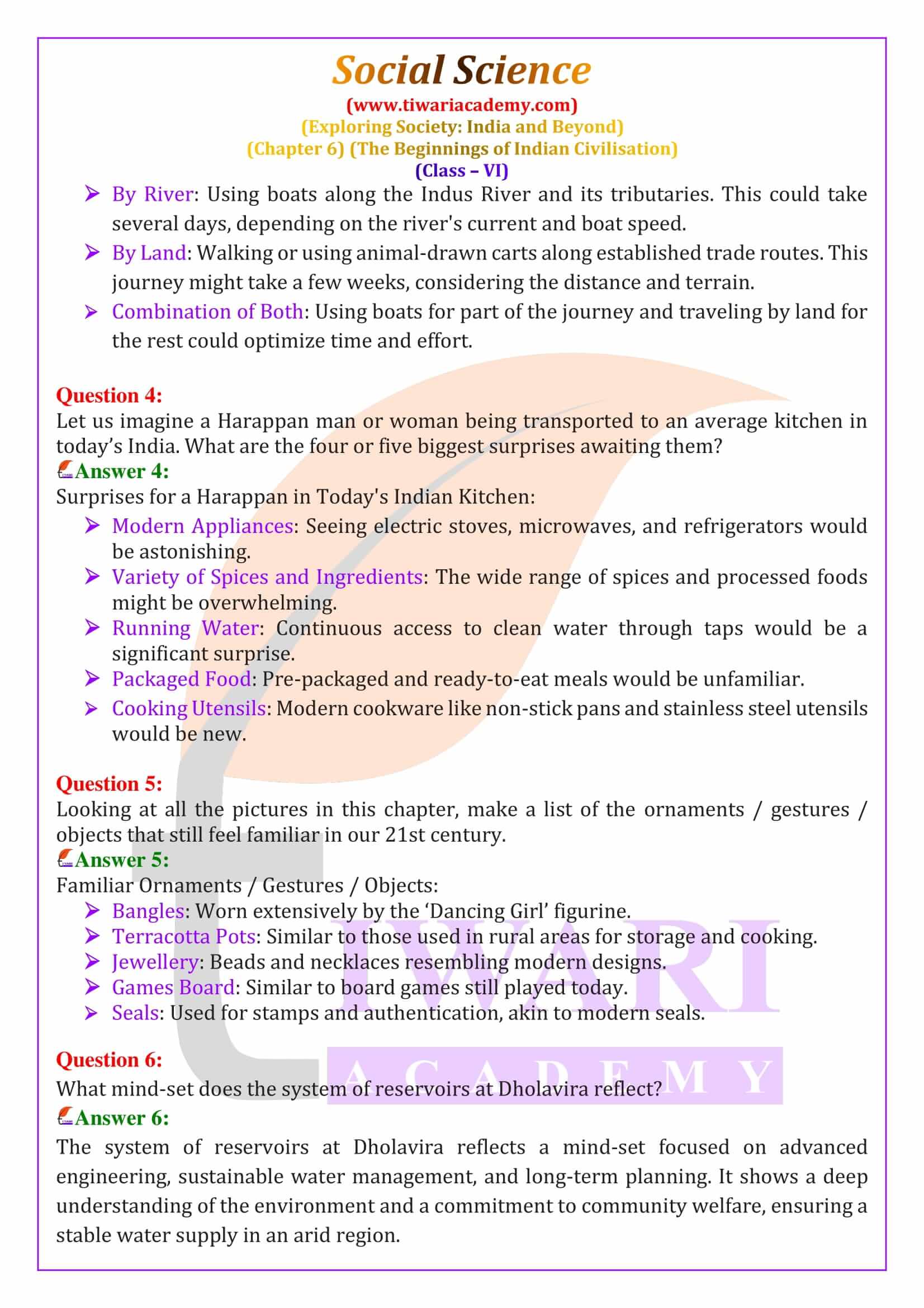NCERT Solutions for Class 6 Social Science Chapter 6 The Beginnings of Indian Civilisation for session 2025-26. Class 6 Social Science Chapter 6 Exploring Society – India and Beyond India Beyond in History Section Question Answers of exercises are given here.
Class 6 Social Science Chapter 6 The Beginnings of Indian Civilisation Question Answers
Introduction to The Beginnings of Indian Civilisation
A civilisation is a complex society where people live together in cities and have advanced levels of government, technology, culture, and trade. Civilisations usually have organised governments to manage daily activities and keep order. They have well-planned cities with buildings, roads, and drainage systems. People in civilisations create different crafts, trade goods, and often have some form of writing to keep records. The first civilisations, like those in Mesopotamia and Egypt, started over 6,000 years ago. In India, the earliest known civilisation is the Harappan or Indus-Sarasvatī civilisation, which began around 2600 BCE.
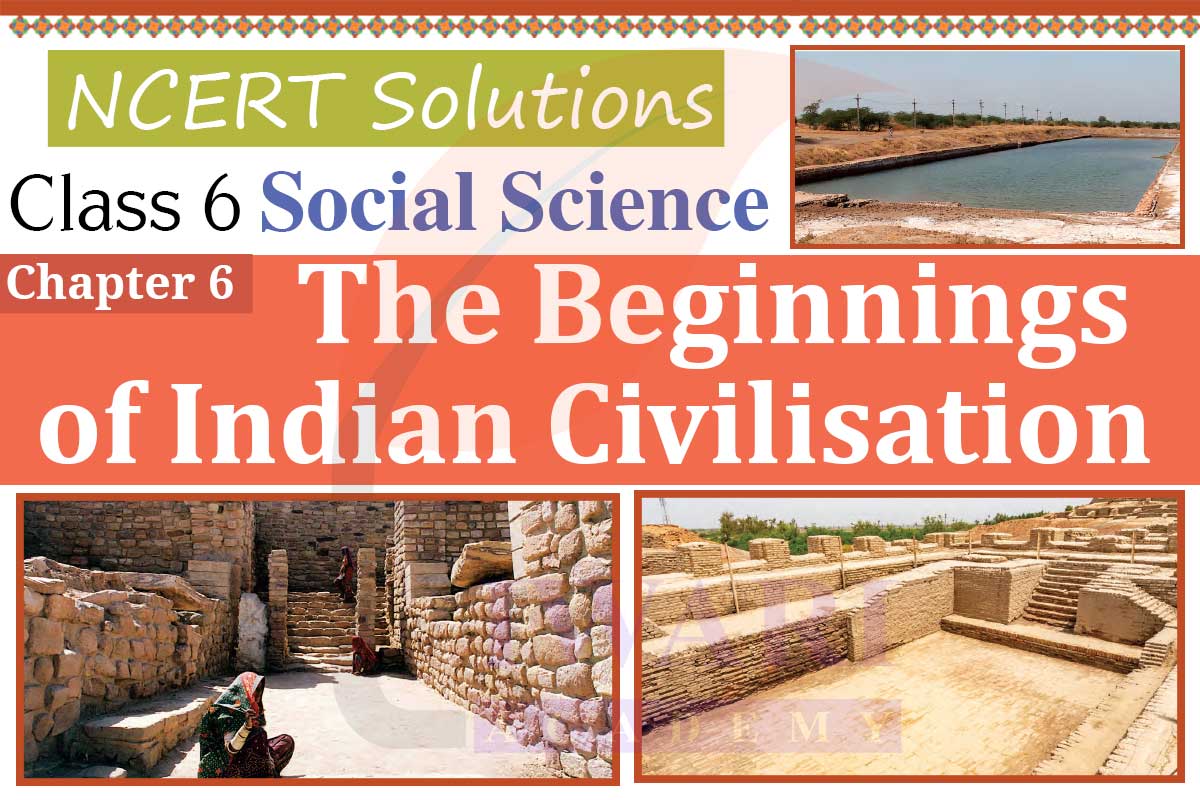
The Rise of the Indus-Sarasvatī Civilisation
The Indus-Sarasvatī civilisation grew in the fertile plains of Punjab and Sindh, areas that are now part of India and Pakistan. This region was perfect for agriculture due to the rivers that flowed through it, including the Indus and the now-dry Sarasvatī. As people began to farm more successfully, villages turned into towns and then cities. The civilisation is named after the city of Harappa, one of its major urban centres, which was the first to be discovered in the early 20th century. This civilisation is one of the oldest in the world and is known for its well-planned cities and advanced society.
Town Planning and Architecture
The cities of the Indus-Sarasvatī civilisation, like Harappa and Mohenjo-daro, were built with remarkable precision. The streets were laid out in a grid pattern, and most cities had two main parts: the upper town, where the elite lived, and the lower town for common people. Buildings were made of bricks, and both large and small houses were constructed with the same high quality. Some cities had large public buildings like warehouses, and one of the most famous structures is the “Great Bath” in Mohenjo-daro, which might have been used for religious rituals. The cities also had advanced drainage systems to manage waste water.
Water Management and Agriculture
Water management was crucial in the Harappan civilisation. The cities had wells and reservoirs to store water, and the houses often had bathrooms connected to an underground drainage system. Agriculture was the backbone of their economy, with people growing wheat, barley, and other crops. They also domesticated animals and fished in rivers and the sea. The civilisation was the first in Eurasia to grow cotton, which they used to make clothes. The successful agriculture supported the growth of cities, making it possible for a large population to live in urban areas.
Trade and Craftsmanship
The Harappans were skilled traders and craftspeople. They traded not only within their civilisation but also with distant regions, including Mesopotamia. They exported goods like beads made from carnelian, a reddish stone, as well as shell bangles and possibly cotton. The civilisation had a maritime trade network, with cities like Lothal having large dockyards to support trade by sea. The Harappans used seals made of steatite to mark their goods, which often featured animal figures and symbols. These seals are some of the earliest examples of writing in the region.
Daily Life and Cultural Achievements
The daily life of the Harappans included making and using various tools and objects, many of which have been discovered by archaeologists. They made pottery, tools, and ornaments, and played games using carved boards and pieces. Cultural and symbolic objects, like the famous “Dancing Girl” bronze figurine and seals depicting deities, show the artistic and religious life of the people. The civilisation had a strong civic sense, with a focus on cleanliness, as seen in their well-maintained streets and drainage systems.
The Decline of the Harappan Civilisation
Around 1900 BCE, the Indus-Sarasvatī civilisation began to decline. The cities were gradually abandoned, and the people moved back to a rural way of life. Scholars believe that climate change, which caused the Sarasvatī River to dry up and reduced rainfall, made agriculture difficult and led to the decline of urban centres. Despite the end of the cities, much of the Harappan culture and technology was passed on to later Indian civilisations. This marks the end of one of the world’s earliest and most advanced civilisations, but its legacy continues to influence Indian culture today.

